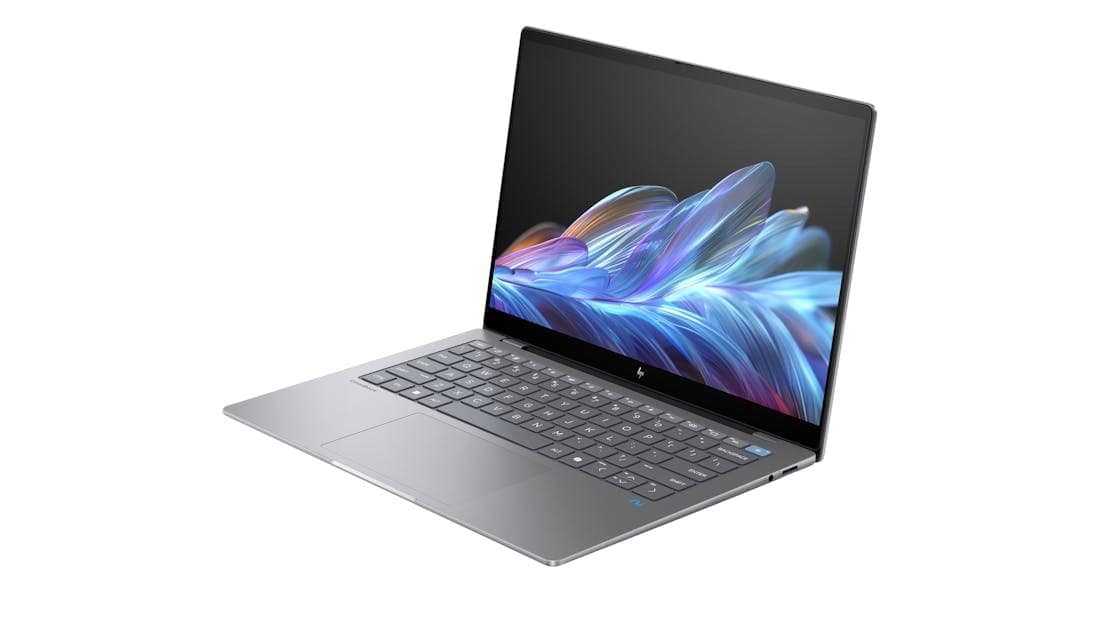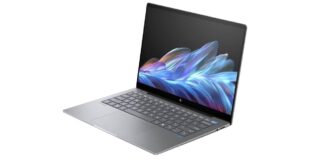Microsoft, together with Qualcomm, launched the so-called Copilot+ PCs. These are particularly notable for their use of a Qualcomm ARM processor. HP has provided us with a Copilot+ PC, in the form of the Omnibook X.
In this article we will discuss the HP Omnibook X, a Copilot+ laptop. What can you expect from it?
- 14-inch touchscreen and 5MP webcam with facial recognition
- Good performance of the Snapdragon X Elite processor
- Excellent battery life
- AI features like Paint Cocreator and Studio effects
- Not suitable for gaming
A Copilot+ PC is a laptop that meets specific hardware requirements to use AI capabilities in Windows 11. From HP, we received their first Copilot+ PC in the form of the HP Omnibook X.
The HP OmniBook X is, to start with, one of the most beautiful laptops we have tested in the past two years in terms of casing. The gray finished aluminum casing is sturdy, thin and looks modern. The only blemish we could find is that the screen is a bit difficult to open. HP has made a notch on the front for this, but in our opinion it is just too narrow, which makes it difficult to open.
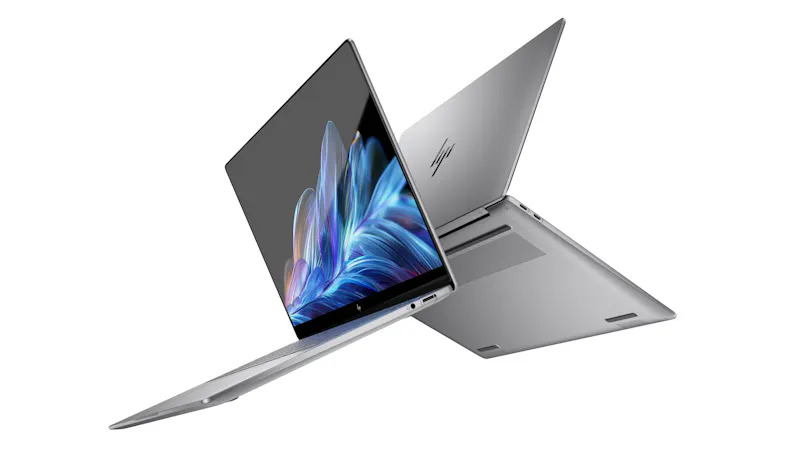
Thin with USB
The Omnibook X has two USB-C ports, both suitable for data, charging and connecting a monitor . There is a difference in speed between the ports: they can process 10 and 40 Gbit/s. On the other side we find a USB-A port with a maximum speed of 10 Gbit/s, which is equipped with a flap that you have to fold down due to the thinness of the laptop. Initially we were skeptical, but the flap turns out to be very conveniently designed. At the bottom of the flap there is a small edge that you push down with the USB plug, after which you can directly insert the USB plug into the USB port. This foldable USB port is almost as handy as a normal USB port and HP proves that a normal USB port on a very thin laptop is still perfectly possible. Finally, the laptop also has a 3.5 mm headset jack; a card reader is missing.
Nice keyboard
The part of the casing containing the keyboard has a dark gray color, but is seamlessly part of the casing. The keyboard itself is largely made in a dark gray color. The function keys are light gray while the on/off key is blue. HP has used a nice large letter that is placed exactly in the middle of the keys. The whole looks clear and tidy.
The only downside could be that there is no right Ctrl key, because HP has placed the Copilot key on the right and used relatively large cursor keys. The keyboard types nicely and has a clear keystroke. As we would expect from an expensive laptop, there is a key illumination that you can set to two levels. Below the keyboard we find a large touchpad with a somewhat loud integrated button. This touchpad works excellently and supports multi-touch gestures with two, three and four fingers.
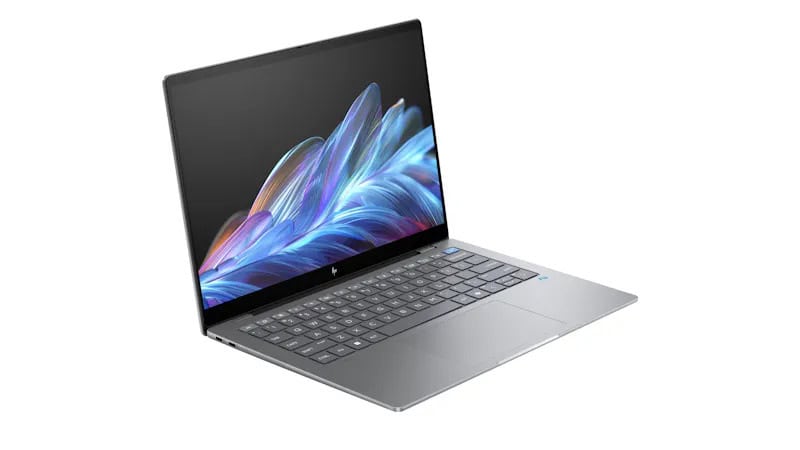
Great screen
The 14-inch screen has a resolution of 2240 × 1400 pixels and thus a pleasant aspect ratio of 16:10. The IPS panel used has a good color reproduction. Compared to other more expensive laptops, it is noticeable that the maximum brightness is not very high. The screen is finished with reflective Gorilla Glass, because it is a touch screen.
Above the screen, HP has placed a 5-megapixel webcam with excellent image quality. You are clearly visible even in poor lighting conditions. It is useful that the camera has a physical slider to cover the lens when you are not using the camera. The camera supports facial recognition and is therefore suitable for logging in to your laptop with Windows Hello.
Good performance
The 12-core Qualcomm Snapdragon X Elite stands out mainly because it is an ARM processor. The HP OmniBook X contains the X1E-78-100, the most basic variant that lacks turbo speed in combination with 16 GB of RAM. Qualcomm itself likes to compare the performance to Apple’s M3, although that is a chip with 8 cores and the M3 Pro with 12 cores would perhaps make more sense. You will only find that in significantly more expensive laptops.
In the benchmarks Cinebench 2024 and Geekbench 6.3 we see that the multicore performance is better than Apple’s M3 with a score of 836 and 13250 points respectively. Apple’s M3 offers a lot better single-core performance, which in Cinebench 2024 and Geekbench 6.3 amount to 101 and 2353 points respectively. The performance of the Snapdragon in this laptop is therefore comparable to the somewhat faster processors from Intel’s Core Ultra series, for example the Core Ultra 9 185H. That is excellent for a completely new processor. Unfortunately, the benchmark in PCMark 10, which we usually use on Windows laptops, does not work with the ARM architecture.
Unfortunately, you don’t get fully passive cooling like on the MacBook Air , but the cooling is a lot quieter than the average Windows laptop.
The Kioxia BG5 SSD with 1 TB storage capacity does not belong to the top with a speed of 293.84 MB/s in the PCMark 10 Quick System Drive Benchmark, but is fast enough for a modern laptop. This is also reflected in the maximum read and write speeds of 3425.13 and 1196.60 MB/s.
The battery life test we normally use in PCMark 10 does not work as previously mentioned. Instead, we used a similar battery life test based on Microsoft Office. In this, the laptop lasts 13 hours and 33 minutes, which is an excellent result for this test. If you work on the laptop yourself, you will certainly get 15 hours.
Not all programs
The Omnibook is notable for having an ARM processor, but most x86-64 programs will run just fine thanks to the Prism emulation layer . Compared to ARM software, you’ll lose between 20 and 40 percent in performance with emulation, but the Snapdragon X Elite is still fast enough that it won’t matter much for a lot of software.
If software doesn’t start, you can still adjust settings via the compatibility settings to try if software will run. We used this for example for the Epic Games Launcher, which only wanted to start after we chose to run the program on one core. It shows that the emulation is not always perfect.
That seems similar to Apple, where emulation layer Rosetta 2 is used to run x86-64 software on Macs with an ARM processor, but there is a big difference. Apple switched completely to the ARM architecture in a short time, which forces developers to make their software suitable for it. That is of course not the case with Windows. Developers are therefore much less forced to make an ARM version of their application and even major developers do not always do that. For example, Chrome does have an ARM version, but Google Drive for desktop, which integrates the cloud service into the explorer, does not work. Google also says it has no plans for that. Despite Prism, you should still check whether your software works in combination with an ARM processor.
Not optimal for casual gaming
Initially, Qualcomm also focused on the performance of the Snapdragon Elite X in games, but the company seems to have backtracked a bit. Microsoft itself clearly does not consider the processor suitable for games, because we cannot install games from the Xbox app. You can install games via Steam or Epic, for example. Many games are made for an x86-64 processor and therefore run via Prism, and we notice that not every game works. On the website www.worksonwoa.com you will find a database in which you can look up whether a game works.
If a game is supported, it’s relatively complicated to run it optimally. That’s because Microsoft now offers a solution baked into Windows to upscale games using AI, similar to Nvidia’s DLSS, AMD’s FSR or Intel’s XeSS, with Automatic super resolution (Auto SR).
Where you enable the other upscaling techniques via the graphics settings of a game, you enable Auto SR via the GPU settings of Windows. The operation is then different than we are used to. A game is namely executed entirely in a resolution that is close to 800 vertical pixels, such as 1280 × 768 pixels. That does not work entirely well on the 16:10 screen of the HP OmniBook X, because the selectable resolutions in a 16:9 aspect ratio are stretched to the entire screen with some slight distortion.
Performance seems to be fine. When we run Shadow of the Tomb Raider with the preset ‘lowest’ at 1920 × 1080 pixels, we get 38 fps. That is comparable to Intel’s Core Ultra processors, despite the emulation. With Auto SR we then get a much more playable 52 fps without sacrificing too much image quality. Still, a Qualcomm processor is not recommended even for casual gamers thanks to the limited compatibility and the somewhat strange implementation of Auto SR.
Added value npu
Due to the built-in NPU, which can handle AI tasks locally, this laptop with a Qualcomm Snapdragon X Elite falls under the name Copilot+ PC. Such an NPU with a computing power of 45 TOPS in this case is not intended for locally running a language model such as ChatGPT. Such applications remain the local domain of fast video cards with enough VRAM from Nvidia, for example. The NPU is mainly intended for relatively simple AI tasks such as smaller language models (SLM), suppressing ambient noise or hiding the background during a video call. There is a good chance that your current laptop or PC can do all of that too. The strength of the NPU is that this chip is designed to perform these tasks as efficiently as possible. This should make your battery last longer, especially if you have a lot of video meetings, for example. Microsoft has built a number of applications into Copilot+ PCs that use the NPU, in the form of Paint Cocreator, Live Subtitles and Studio Effects. We will briefly discuss these applications below.
Confusingly, Microsoft calls all of its AI services Copilot in one way or another. So Copilot+ has nothing to do with the free virtual assistant Copilot or the paid Copilot Pro, which unlocks smart features in Office applications. Copilot+ PCs also don’t accelerate the functionality of Copilot or Copilot Pro; those AI applications run entirely in the cloud. Of course, Copilot+ PCs do have a Copilot key on the keyboard that opens Copilot, the GPT-based virtual assistant.
Creating image
Paint Cocreator uses the npu to generate simple images based on what you draw in combination with a prompt. You can adjust the level of creativity with a slider and indicate in what style the image should be made. Sometimes it works well, but often it doesn’t seem to really look at your source image. The maximum size you can make is 2000 × 2000 pixels. It’s a nice toy, but as far as we’re concerned, nothing more than that. Specialized cloud services like Dall-E or Midjourney make much better images.
The Photos application that comes with Windows contains almost the same functionality. The Restyle Image generates an image based on an existing photo. Photos also contains the Image Creator, to generate a simple image based on a prompt.
It is striking that although the images are generated locally, an underlying cloud service checks whether your images meet the requirements. Without an active internet connection, these functions do not work. For Microsoft, the local AI seems to be mainly a way to relieve its own cloud services.
Live subtitles
Live subtitles use the NPU for an AI model that can provide spoken text with subtitles live. Many languages, including Dutch, are recognized, but the subtitles themselves are only shown in a few languages, including English. Live subtitles work completely locally without an internet connection and can be used for both streaming services and local videos. You enable live subtitles via the quick settings in the system tray. The function itself works, but is actually a bit too slow when you are watching a film. Also, quite a few translation errors are made from Dutch, making dialogues incomprehensible.
Studio effects
In the quick settings in the system tray you will find Studio effects, with which you can place filters over the image of the webcam to, for example, blur the background. The handy thing about this is that you set it centrally and it then works in every program that uses the webcam. In addition to blurring the background in two ways, you can also apply three creative filters with which the image should look like a cartoon, for example. These effects are not very nice.
You can also set it to maintain eye contact, but that didn’t always work convincingly for us either. The automatic framing, which keeps you in the middle of the image, is a bit too subtle for us. HP also supplies an app with Poly Camera Pro itself, which allows you to use AI to overlay effects on the camera. That program offers extensive options, such as replacing the background and placing text on the image.
All in all, the AI capabilities that Microsoft offers with Copilot+ are not really convincing and are at best more like handy extras that are not indispensable.
Recall
The most notable feature, Recall, uses screenshots and analysis to create a searchable timeline of your computer history. However, Microsoft has pulled the feature for now due to privacy concerns. Recall will be available again for Copilot+ PCs in a later update, and can be turned on or off as desired.
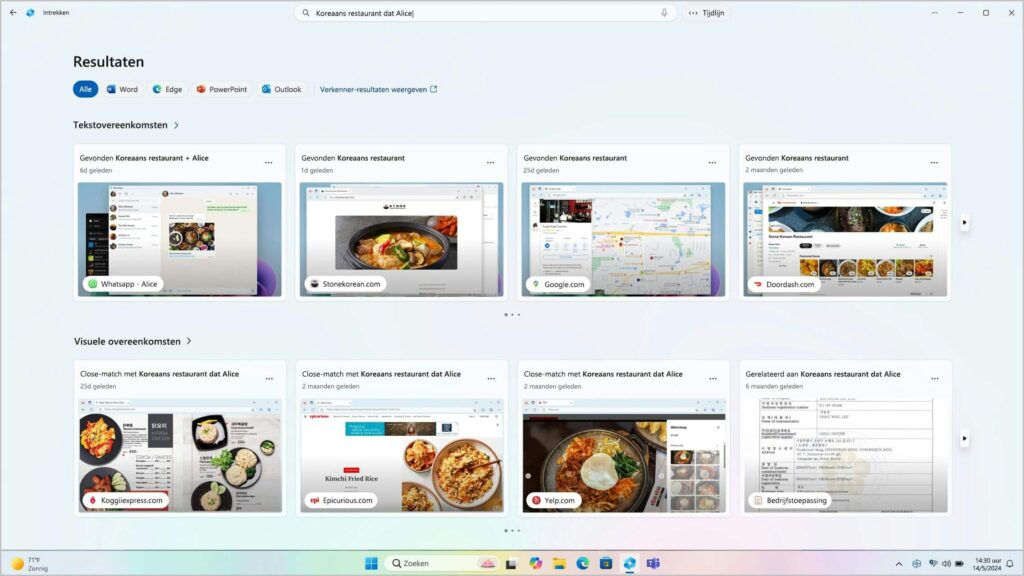
Conclusion
For now, working on a Copilot+ PC equipped with a Qualcomm processor does not provide a revolutionary different experience than a laptop equipped with an Intel or AMD processor. That may be a bit disappointing, but at the same time Intel and AMD seem to have a serious competitor. The user experience is generally good and the HP Omnibook X is a beautifully designed laptop that works relatively quietly and has very good battery life.
Especially if you mainly use your laptop for everyday office work, you will get a very nice experience in your hands. If you use all kinds of (exotic) software, then you have to investigate carefully whether the programs you use will work. Gaming on a compact laptop with an integrated GPU never offers you the best experience, but we strongly advise against a laptop with a Snapdragon X Elite for that purpose. For example, the experience that Automatic super resolution offers still feels a bit too experimental.
Pros
- Good performance
- Relatively quiet cooling
- Beautiful housing
- Excellent battery life
Negatives
- Support games
- Not all software works
- AI features not very useful
Price
€ 1399,-
Processor
Qualcomm Snapdragon
RAM
16 GB
Storage
1TB SSD
Screen
14 inch touch screen, IPS (2240 × 1400 pixels)
Connections
2x USB-C (charging and display), USB 3.2, 3.5mm headset jack
Webcam
5 megapixel camera with facial recognition
Wireless
Wifi 6E (2×2), bluetooth 5.3
Dimensions
31.3 × 22.4 × 1.4 cm
Weight
1.34 kg
Battery
59 Wh
Website
 ITkothon: A new direction in the world of technology IT Talk
ITkothon: A new direction in the world of technology IT Talk
